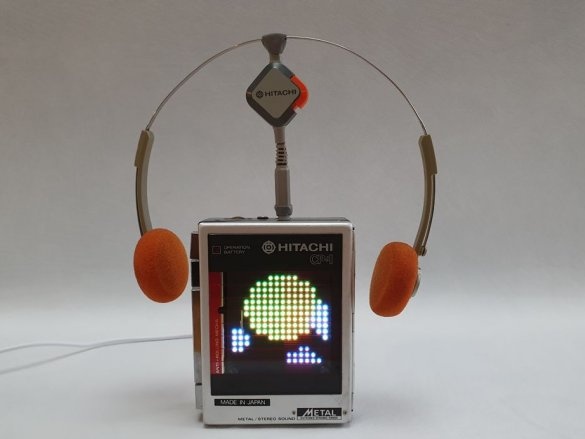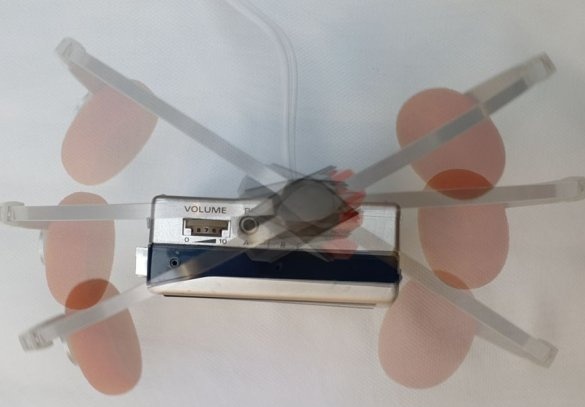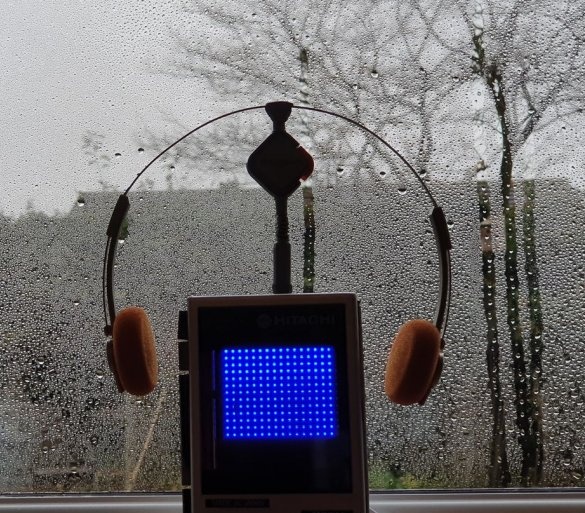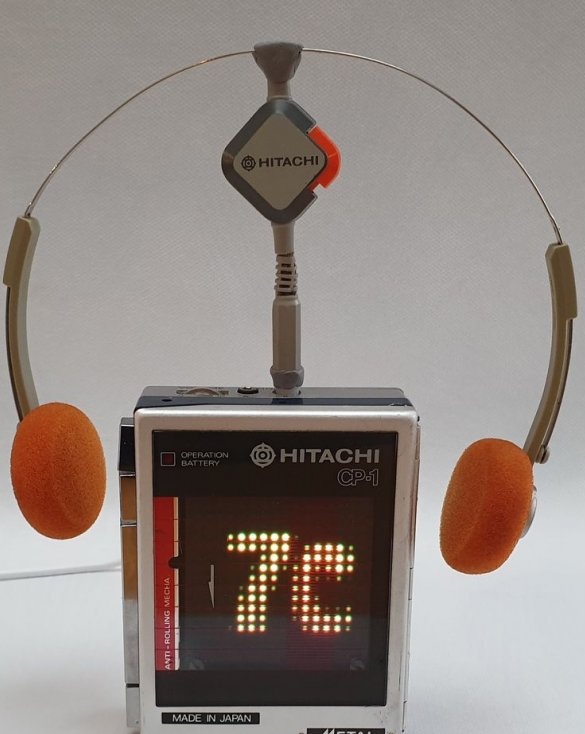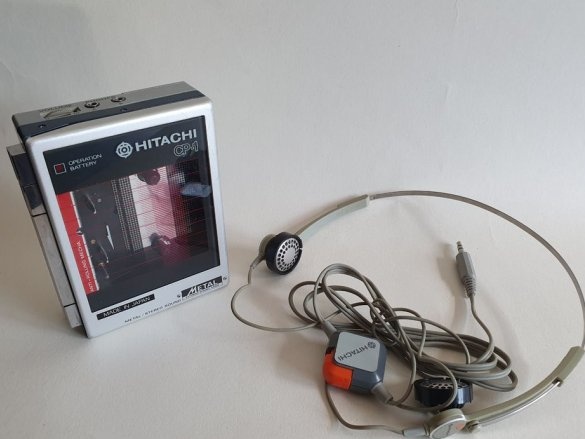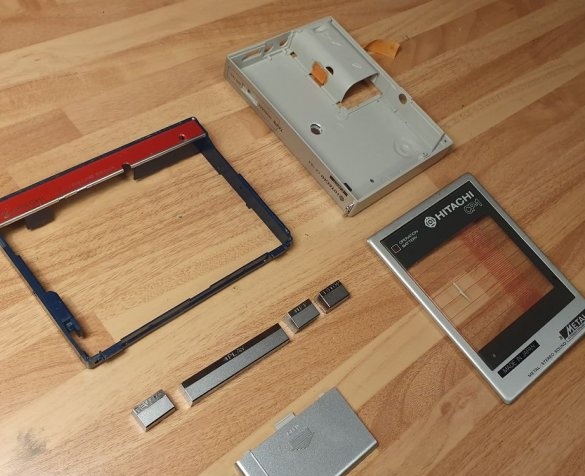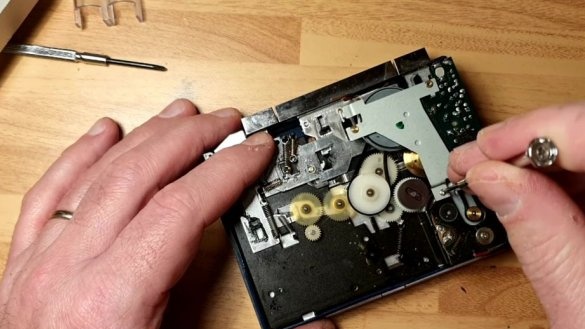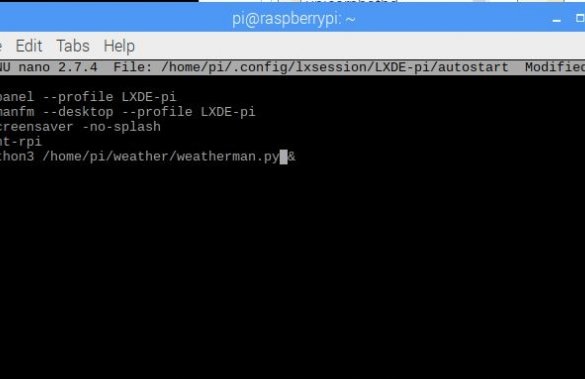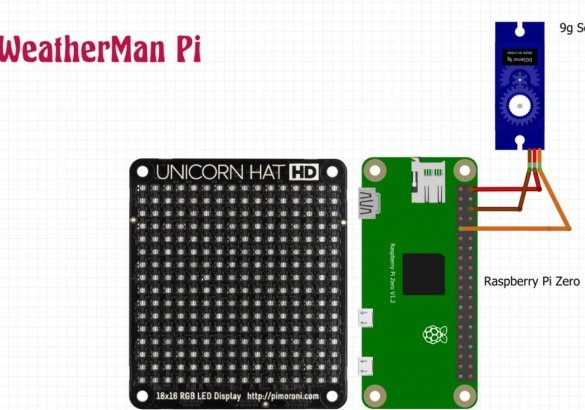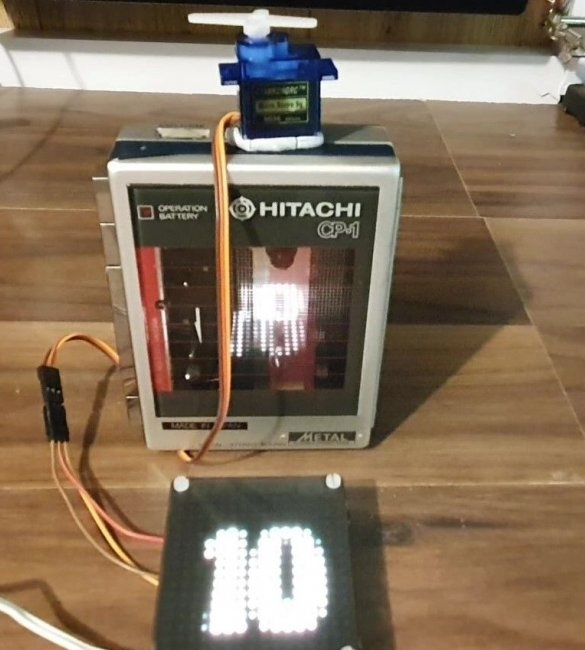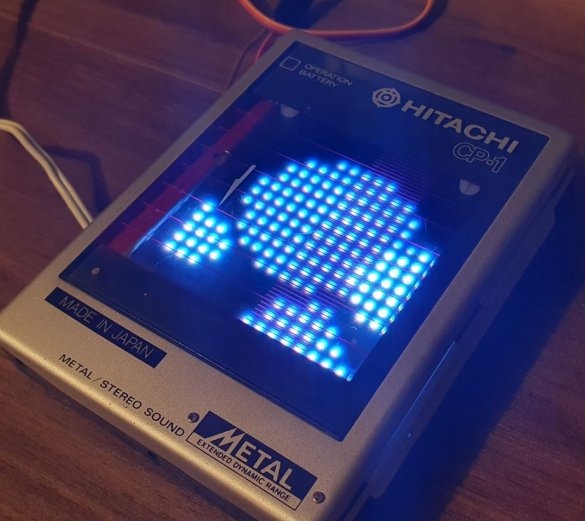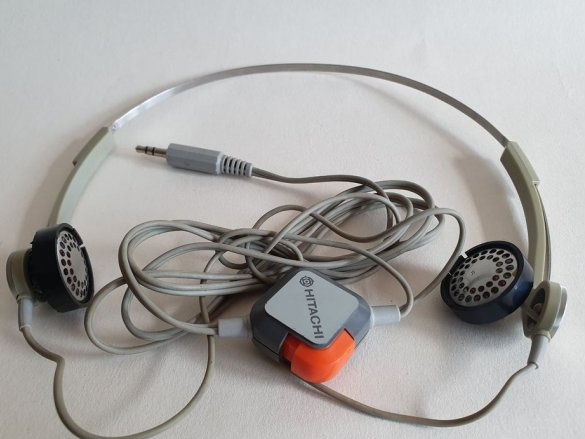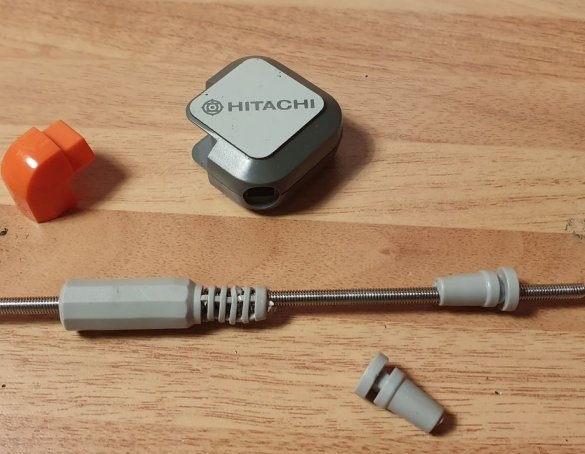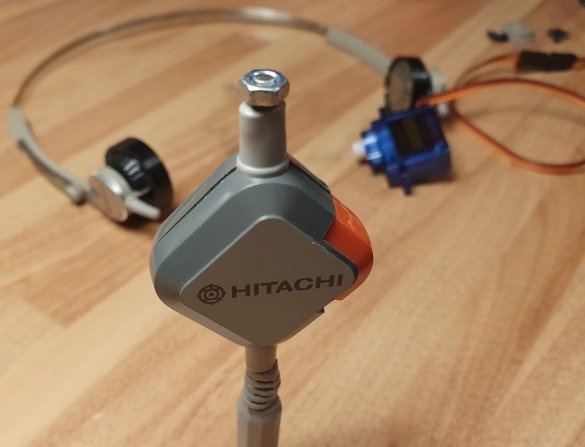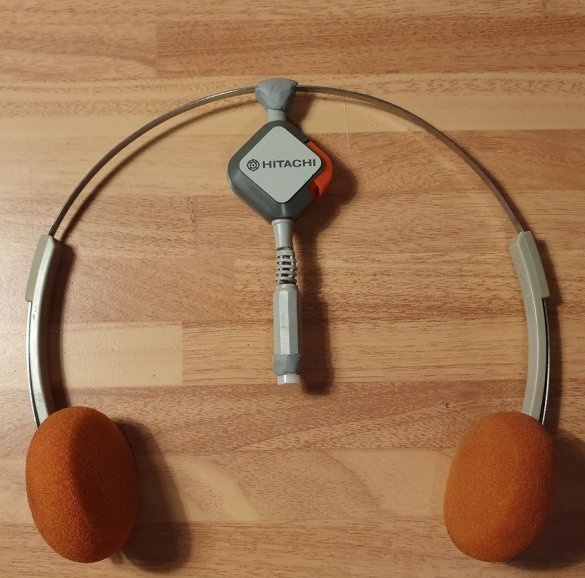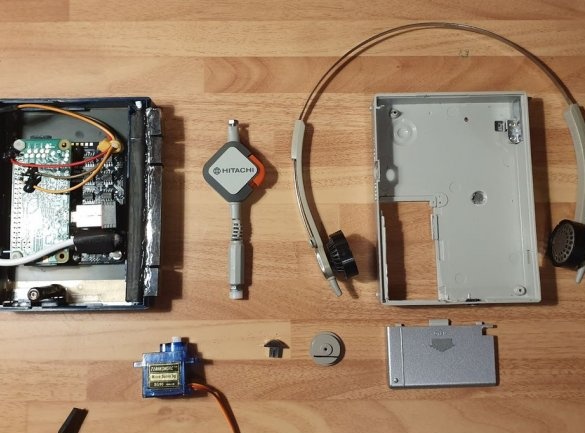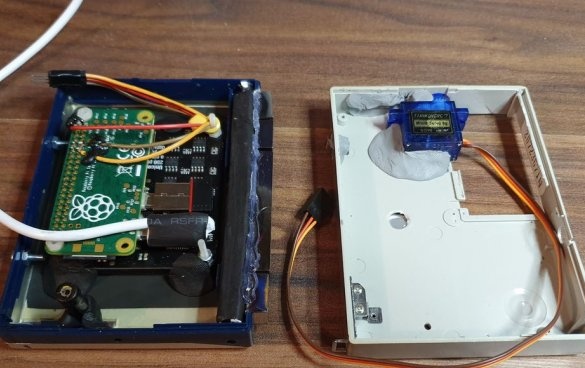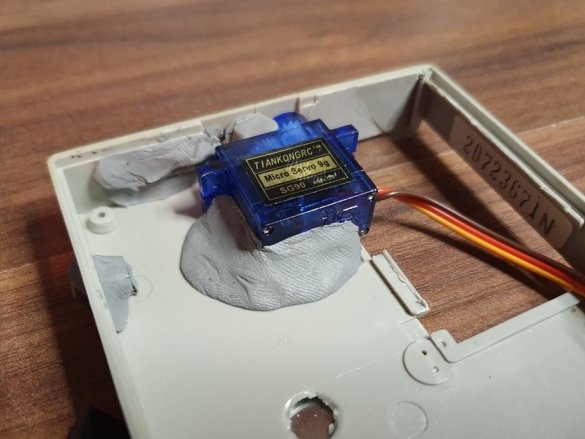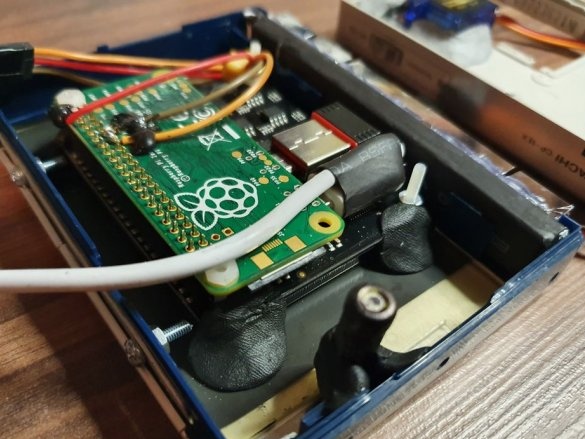The author of Instructables under the nickname MisterM assembled a weather station with a pixel LED display in the case from a faulty Hitachi cassette player. Headphones located above the player, when warning of a dangerous meteorological situation, begin to slowly rotate from side to side with a little noise.
Work on homemade the master starts by disassembling the player. The components extracted from it can be sold to video bloggers repairing such players and removing repairs on video. Of course, it is better not to disassemble the players of rare modems.
The wizard goes through this link and registers a free account that allows you to make no more than 1000 calls to the API per day, which is more than enough. At the same time, he receives a key, which can then be placed in Python scripts to perform automatic calls. Like passwords, this key should be kept secret, because knowing it, other users will make a total of more than 1000 calls per day, and the weather station will stop working until the next day.
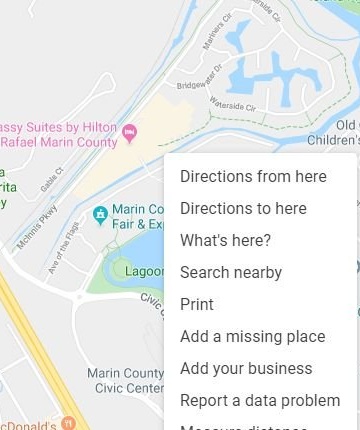

Then the wizard begins work on the software, which, after being brought into a usable state, uploads here.
In order for the weatherman.py script to run automatically when Raspberry Pi is turned on, the wizard opens the autorun file in a text editor:
sudo nano /home/pi/.config/lxsession/LXDE-pi/autostartAnd writes the line at the end of the file:
@ python3 /home/pi/weather/weatherman.py &Then saves the file. Also included are icon.py, phones.py, precip.py, and temp.py files, their purpose, respectively: output images with a resolution of 16x16 pixels, control the rotation of the headphones with a servomotor, display the probability of precipitation, display the temperature in Herkules font (format TTF) or any other.
The master simply puts a “hat” with the display on the Raspberry Pi (in this case, Zero W with a comb, if it is missing, it needs to be soldered, and the board without WiFi, I recently toldwhat to do), and the servo connects like this:
Checks everything on weight:
And then he checks how the display will look in the case of the player. You can take any other suitable ready-made or home-made case.
Redo the headphones to install the resulting design on the servo shaft so that it can rotate it:
And finally, everything is completely collected, and an unusual weather station pleases not only the master, but also all the spectators of his streams:
And although RGB LED displays did not exist then - there were no blue LEDs - the vintage and modern components in this weather station look great together.

